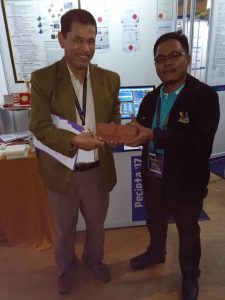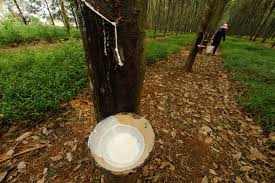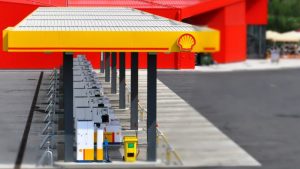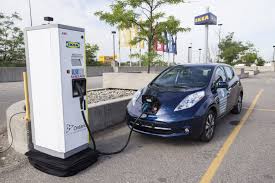Intellectual Properties in Companies
Posted on
Introduction
Many businesses, including services firms, do not realize they have intellectual property rights that are valuable, such as trademarks and copyrights, and that there are means to protect them. Conversely, many businesses may think they own the intellectual property rights in work they paid for, such as custom software, when in fact they may not hold any such right at all.
Generally, there are four categories of intellectual property: trademarks, copyrights, patents and trade secrets:
- Trademarks are words, symbols or phrases that are used in connection with a good or service and identify the source of the product or service. For instance, Coke is a trademark used in connection with carbonated soft drinks and the source is The Coca Cola Company.
- Copyrights are rights created from an original work of authorship that is reduced to a tangible medium, such as books, artwork, even software programme and website content.
- Patents encompass “inventions’-novel and non-obvious utilitarian processes, matter or articles of manufacture-and can include design patents or business method patterns.
- Trade secrets are non-public information and know-how that would have a value to a competitor. Following the Coke example, the formula for Coke is considered one of the most valuable trade secrets in the world.
It is important for firms and companies to take time and efforts to review their business information to understand and grasp the value of their intellectual property and to determine what rights they actually hold and those they do not. Intellectual property lawyers assist their clients in conducting what is referred to as an “intellectual property audit” to give a business a picture of its rights.
K. S. Grimsley and P. K. Riewerts (CPA Practice Management Forum, July 2010) have suggested a list of items that such an audit might cover.
Trademarks
Does the business have trademarks? Firms and companies should determine if they are using any trademarks in connection with their goods or services. For instance, do they use a design, word or phrase in connection with a product, such as clothing, or pharmaceutical product, or a service such as accounting services or consulting service?
The use of a mark alone establishes trademark rights in the geographic area of use, which is beneficial in preventing others from using the same or a similar mark in the same geographic area. Registration acts as notice to the world that you own a trademark in a mark for particular goods or services, which is an important deterrent to third parties using the same or similar mark.
Thus, when doing an audit, companies should review their websites and marketing materials to determine what trademarks they have and whether these are registered or should be registered.
Are the business’s marks available for use? Another important aspect in reviewing trademarks is to make sure the marks the company is using are actually available for it to use as such. If the company is using a mark that is the same or similar to another mark by a prior user, the company could find itself in threatened or actual litigation for trademark infringement.
Consistent use of marks and policing marks. Once a company has established rights in a mark, two important aspects are to use the marks consistently and to police the marks. Regarding consistent use, the company should use the marks on products or in connection with the services in the same manner and form in which they are registered or if not registered, as the company has always used the mark. Strength in mark is built up through consistent use, and modifications could potentially hinder the company’s rights and registration.In addition, the company should police the marks to make sure other third parties are not using them. If a company does not watch its marks and contest others who infringe upon its mark, it runs a risk of losing its rights in the mark.
Licensing. A final task on trademark checklist is to determine if it is allowing others to use its marks. For instance, does the company have third parties it allows to use the mark? If so, does it have a license agreements in place outlining its rights in the mark and the fact that it will exercise quality control over how the mark is used by the third party? Failure to manage the quality of goods and services sold under the company’s marks-referred to as naked licensing-can potentially lead to losing the company’s rights in a mark. Thus, to maintain all rights, the company should have license agreements in place containing quality-control language, and the company should actually review the quality of those goods and services.
Copyrights
Does the business have copyrighted materials? Companies should investigate what works of authorship they have created. This includes works created by employees in their scope of employment. Copyrights no involve just novels and artwork. If a company has created software programmes, training manuals or articles for its website, the creation of such material in some fixed medium creates copyright right in the material. To be copyright-able, the work must be fixed in a tangible medium of expression. The idea for a software programme or advertisement is not copyright-able; however, the company can protect the expression of the idea. Therefore, the software programme or brochure promoting the business is copyright-able. Copyright owners enjoy several exclusive rights in their works, including the right to reproduce the work, to make derivative works (adaptations or transformations of the original work), to redistribute the work and the right to display and perform the work publicly.
Why obtain copyright registration? With copyrights, the company is protected under the Copyright Act the moment a work is created. However, a company may want to consider obtaining copyright registration in these works. Registration is usually inexpensive and offers several benefits. It constitutes public notice the work is protected, which may deter others from copying the work without permission. Registration is mandatory before bringing a copyright-infringement lawsuit. A third benefit of timely copyright registration is that it entitles the registrant to certain legal remedies against infringers that would otherwise be available, such as statutory damages and legal fees. Otherwise, an award will be limited to actual damages and profits, which can be difficult and expensive to prove.
Employee works versus independent contractor works. To the extent that the company had work created by employees, that work is automatically deemed to be authored and owned by the employer under the work-for-hire doctrine. However, if the work is created by an independent contractor, it is likely that the rights in the work are actually owned by the independent contractor, and at most, the company may have a license to use the work, unless the contract specifically states that the company owns all intellectual property rights in the work. This issue arises frequently in situations of customized software and website development. Thus, to the extent that the company has had works of authorship created, such as software programme, website or survey manuals, the company should review the contracts to determine ownership rights. To the extent the company dose not own the rights, it should consider negotiating with the independent contractor to assign the right to the company.
Licensing. To the extent the company allows others to use its works, the company should make sure that it has licenses in place with these parties that fully explain its ownership in the works and the other party’s right to use them under terms of the license it grants. It may also want to make sure it has the right to terminate the license in the event of a breach of the license terms. Further, to the extent the company is using work that is owned by someone else, it should review the license agreement to determine its rights and obligation under the agreement.
Patents
Does the business have patents? Patents cover a variety of technology, including inventions in connection with mechanical devices, processes, scientific compound combinations, new varieties of plants, software programme and product designs. Patents can also be obtained on novel and non-obvious business methods, although these types of patents are scrutinized heavily and take much longer to issue. A patent is issued by a national government and gives the holder the right to prevent others from making, selling or importing any device or process that infringes one or more claims in the patent. In most cases, this right is limited in time to 20 years from the date it is filed with the national government authority in charge of patent registration. It is important to note that patents are negative rights-that is, they provide a right to prevent others from doing certain things; in plain English what this means is that just because you have a patent, that does not mean you can sell or make the device because doing so could still infringe a prior patent.
Processes and procedures in place. To qualify as a patentable invention, the invention must meet certain requirements. Therefore, a business should ensure it has the proper processes and procedures in place to assess an invention for patentability. Such procedures include having employees notify the proper business personnel upon development of a potential invention and evaluating the strength of such invention.
Deadlines. It is of utmost importance to consult a patent lawyer early on in the invention process regarding the scope of prior art or the possibility of infringing another’s patent. As an example, in the US, patents must be filed within one year of the date of the product or service embodying the patent is sold, offered for sale, publicly used or publicly disclosed. In most countries like Malaysia, there is no grace period and the application must be filed before any commercial use or disclosure. By consulting a patent lawyer, a business informs itself of patentability requirements, application details and filing deadlines that could prevent an inventor from securing a patent. Likewise, is a business seeks to file foreign patent applications, a patent lawyer will be able to advise on tying back foreign filing benefits to an earlier application filing date, if addressed in a timely manner.
Record-keeping. In addition, a business should retain and keep accurate records of information associated with the invention, such as research and lab notebooks and designs. These materials are essential to establish the dates of creation for the invention and will be needed if the patent application or registration is challenged.
Employee works. Furthermore, protective measures should be implemented with employees developing inventions. Unlike copyrights, there are no work-for-hire doctrine in patent law. With one narrow exception, all patent right transfer must be in writing. Thus, a business should seek assignment agreements with its employees before the work begins to secure the rights of the business in the invention. The narrow exception exists for employees that have been “hired to invent”. Agreements allow for the smooth transition of ownership from the employee to the company. As an incentive to continue developing inventions, companies will often set up a royalty or profit sharing plan for any invention that proceeds to registration. Also, non-disclosure and confidentiality agreements should be secured with anyone developing, having access to or any knowledge of the invention, or anyone who is engaged to test the invention.
Trade Secrets
Keeping trade secrets a secret. Trade secrets consist of information that is of value to the business owner and would be damaging to the business owner if disclosed to a competitor. A classic example is the Coke formula. From time to time, businesses will enter into negotiations with other businesses or individuals to team up for a business venture. Two parties could agree to create a software programme together, work on research and development together or work together in a particular project. During these negotiations, each party may disclose information that is considered confidential and could harm the party if disclosed to third parties. This could include trade secrets and other intellectual property. To protect this information, a company should make sure that it has a non-disclosure agreement in place requiring both parties use the information they receive specifically for the purpose under the business deal, that they will not disclose the information to any third party without permission and that at the end of the discussion, they will return all confidential information to the other party who owns it.
Conclusion
A typical company may have one or more of the four categories of intellectual property. It is important that a company lists out the inventory of the type of the intellectual property and decides the proper action plans to be implemented.












